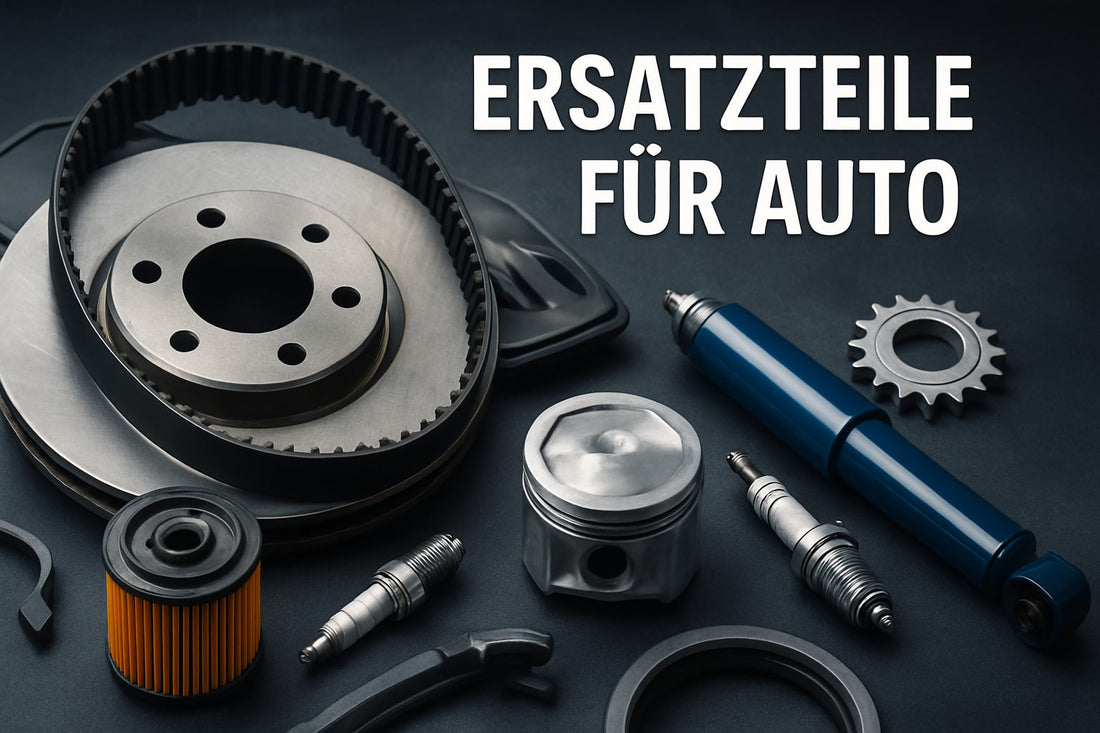
Car Spare Parts: The Ultimate Guide 2025
Share
Choosing the right spare parts for your car will be more important than ever in 2025. Rising prices, new vehicle technologies, and the growing variety of models present drivers with major challenges. Spare parts are crucial not only for carrying out repairs safely and efficiently, but also for maintaining the value and safety of your vehicle over the long term.
This ultimate guide will provide you with all the answers to your questions about car spare parts: from selection and ordering to professional installation. Read on to save money, extend the lifespan of your car, and avoid common mistakes when purchasing parts.
Look forward to a comprehensive overview of spare part types, sources, quality differences, practical installation tips, current trends for 2025, and important legal information.
Car spare parts: basics and categories
Selecting the right spare parts for your car forms the basis for safe and reliable vehicle operation. Spare parts not only ensure your car's flawless performance but also contribute significantly to maintaining its value and safety. Those who understand the basics can avoid costly mistakes and extend the lifespan of their vehicle.
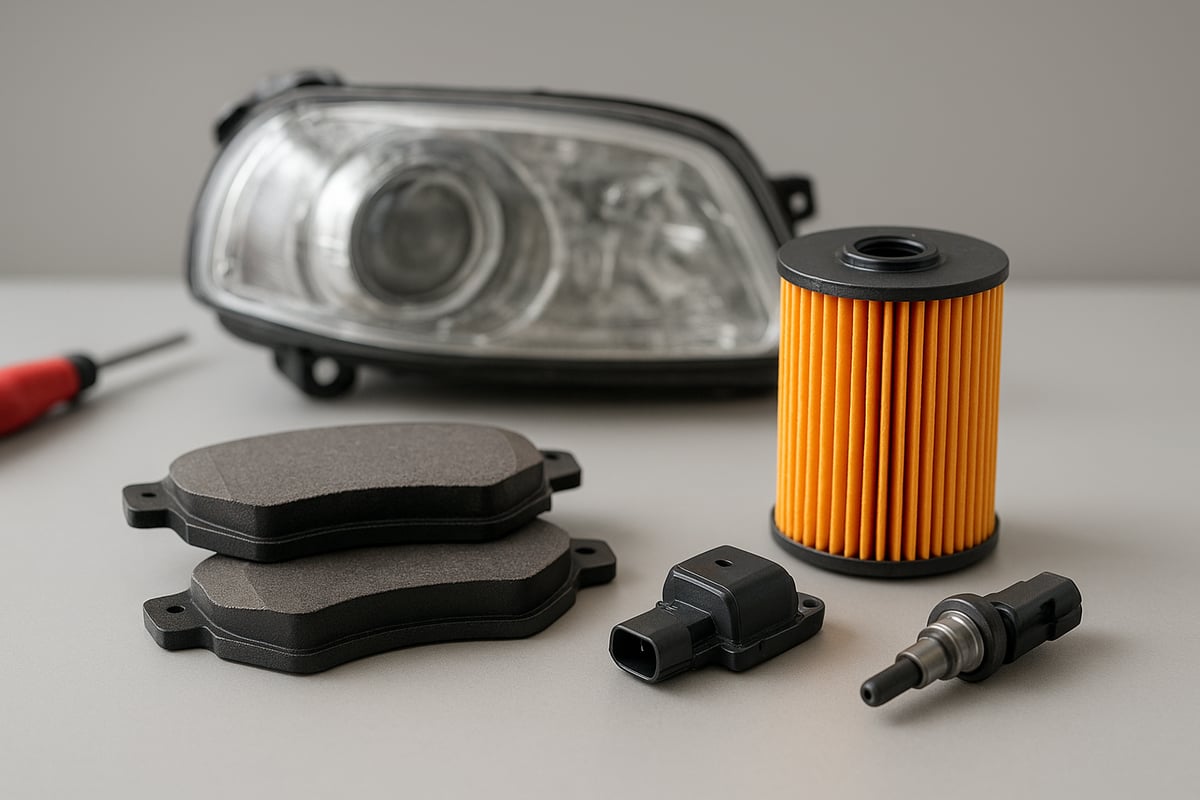
What are car spare parts?
Car spare parts include all components that need to be replaced over time to ensure the vehicle's functionality. A distinction is made between wear parts such as brake pads and filters, body parts such as bumpers, electronic components such as sensors and control units, and accessories such as floor mats or roof racks.
Typical examples of spare car parts include brake pads, air and oil filters, headlights, and parking sensors. These are essential because they ensure both the safety and value retention of the vehicle. Regular replacement also increases reliability and prevents expensive consequential damage.
Original parts, identical parts, replica parts: Differences and advantages & disadvantages
When it comes to spare parts for cars, a distinction is made between original parts (OEM), identical parts, and replica parts. Original parts come directly from the manufacturer and meet the highest quality standards. Identical parts are usually manufactured by the same suppliers but do not bear the brand logo. Replica parts come from independent suppliers and vary greatly in quality and price.
| type | Quality | guarantee | Price | Example |
|---|---|---|---|---|
| Original part | High | manufacturer | High | VW brake disc |
| Identity | High | Suppliers | medium | Bosch spark plug |
| Replica part | Variables | Restricted | Cheap | No-name oil filter |
Original parts offer maximum safety but are more expensive. Identical parts are often equivalent but less expensive. Replica parts can be inexpensive, but carry the risk of quality defects that lead to premature wear or safety issues. Especially with safety-relevant spare parts for cars, certified quality should be ensured.
Categories of the most important spare parts
Car spare parts can be divided into four main categories:
- Wear parts: Brakes, filters, clutch, timing belt
- Body parts: Bumpers, exterior mirrors, headlights
- Electronic components: Sensors, control units, batteries
- Accessories and tuning parts: Floor mats, spoilers, rims
Statistics show that brake pads, oil filters, and batteries will be among the best-selling spare parts for cars in 2024. Anyone looking for a comprehensive overview of the diverse categories will find a structured Spare parts categories overview online. This allows you to search specifically for the right part for your model and learn about special features.
Service life and maintenance intervals
The lifespan of car spare parts depends heavily on the specific part, driving style, and environmental conditions. Brake pads last an average of 30,000 to 50,000 km, and oil filters should usually be changed every 15,000 km. Manufacturers specify clear maintenance intervals for many parts, which you can find in the service booklet.
A preventative replacement of spare parts for cars can be financially worthwhile if it prevents subsequent damage. Frequent drivers and vehicles in demanding conditions should particularly follow these recommendations to ensure operational safety.
Sources for car spare parts in 2025: Online, specialist retailers & workshops
The market for spare parts for cars has changed dramatically in recent years. By 2025, drivers will face a wider selection of sources than ever before. Whether online, in specialist stores, or at the workshop, each option offers its own advantages and challenges. Choosing the right source can save costs and ensure quality.
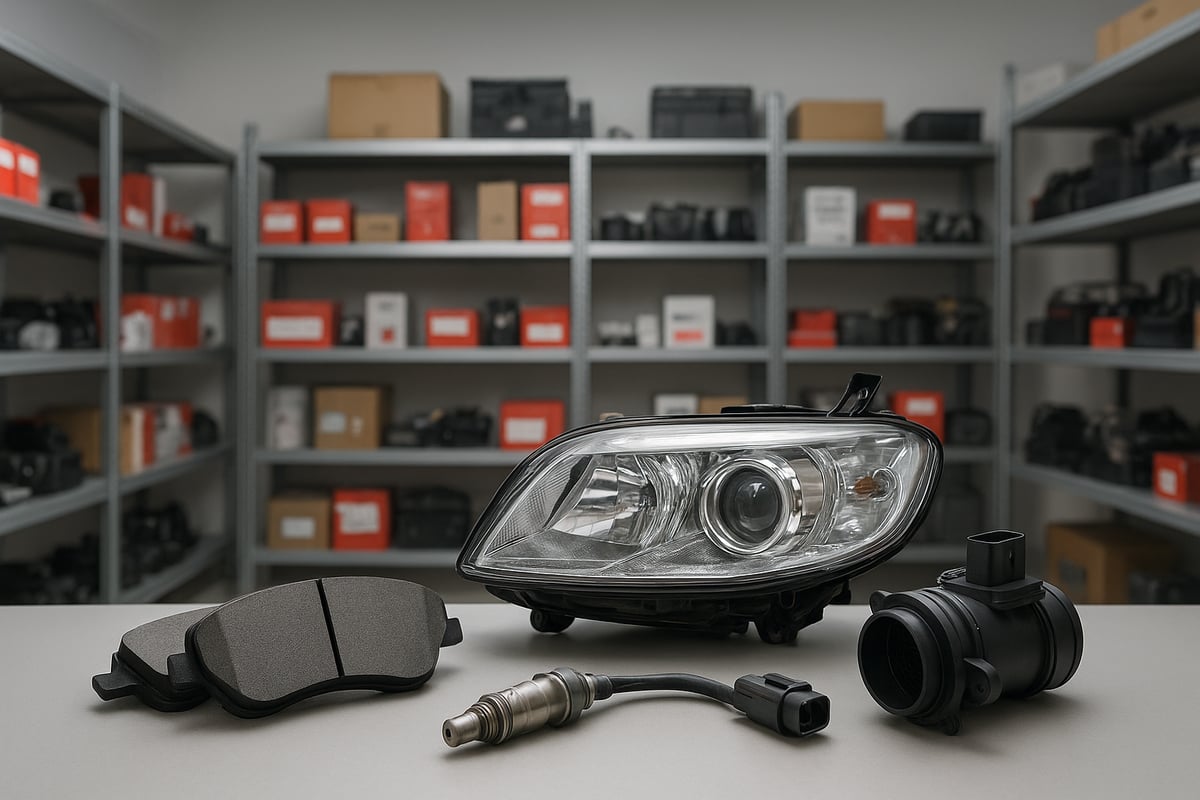
Online shops: opportunities, risks and selection criteria
Online shops for car spare parts are more popular than ever. The advantages are obvious: a huge selection, easy price comparisons, and authentic customer reviews. Many portals offer filter functions that allow you to search specifically for suitable parts.
However, there are also risks associated with online purchases. Counterfeits, unknown origins, and limited advice are potential pitfalls. Especially when it comes to safety-relevant car spare parts, you should look for certified dealers.
Important selection criteria:
- Trusted Shops seal and quality seal
- Clear return conditions
- Transparent dealer information
A price comparison shows that brake pads often cost 20 to 30 percent less online than in a garage. However, caution is advised to avoid purchasing inferior car parts.
The classic specialist retailer and the brand workshop
Brick-and-mortar retailers and branded workshops remain important points of contact for car spare parts. They offer personalized advice, immediate availability, and generally straightforward warranty processing.
While prices are often higher here than online, customers benefit from expert support. For example, an oil filter often costs less at ATU than at an authorized repair shop, but the differences in quality can be significant.
Advantages at a glance:
- Direct contact for questions
- On-site warranty and complaint processing
- Often faster availability of important spare parts for cars
Especially for more complex repairs or questions about compatibility, it is worth going to a specialist dealer.
Car recyclers and used parts
Anyone looking for sustainable spare parts for their car will find what they're looking for at auto recyclers. Used parts are often cheaper and help conserve resources. This can be a sensible option, especially for older vehicles.
But be careful: When it comes to safety-relevant components such as brakes or airbags, used car spare parts should only be used after careful inspection. Test criteria include:
- Visual inspection for cracks and wear
- Comparison of part numbers
- Proof of origin
Sustainability and cost savings go hand in hand when the quality is right.
Price development and market trends 2025
According to industry statistics, the prices of spare parts for cars are rising by 3 to 5 percent annually. This is due to inflation, rising commodity prices, and global supply chains. Another trend is the increasing use of sustainable and recycled spare parts for cars.
The forecast: The European automotive aftermarket will continue to grow until 2030 and will focus more on digitalization and environmental friendliness. Detailed analyses and market drivers can be found in the Forecasts for the European automotive spare parts market until 2030.
Those who remain flexible and follow current trends can continue to find high-quality car spare parts at fair prices.
Genuine Honda spare parts at autoseifert.com
For Honda vehicle owners, autoseifert.com offers genuine car spare parts of proven quality. The shop specializes in authentic Honda spare parts and ships throughout Europe.
Advantages:
- Personal advice from experts
- Tested quality and original parts
- Fast shipping for many models
For example, a genuine Honda oil filter or brake pad guarantees a precise fit and retains its value. Those who rely on genuine car spare parts benefit from long-term reliability and safety.
Quality features and test marks: What to look for when buying spare parts?
Quality features are crucial when purchasing spare parts for your car. They determine not only the service life but also the safety of your vehicle. Anyone who wants to play it safe when purchasing parts in 2025 should be familiar with the most important test marks, certificates, and inspection points. This is the only way to avoid inferior products and ensure optimal value retention.
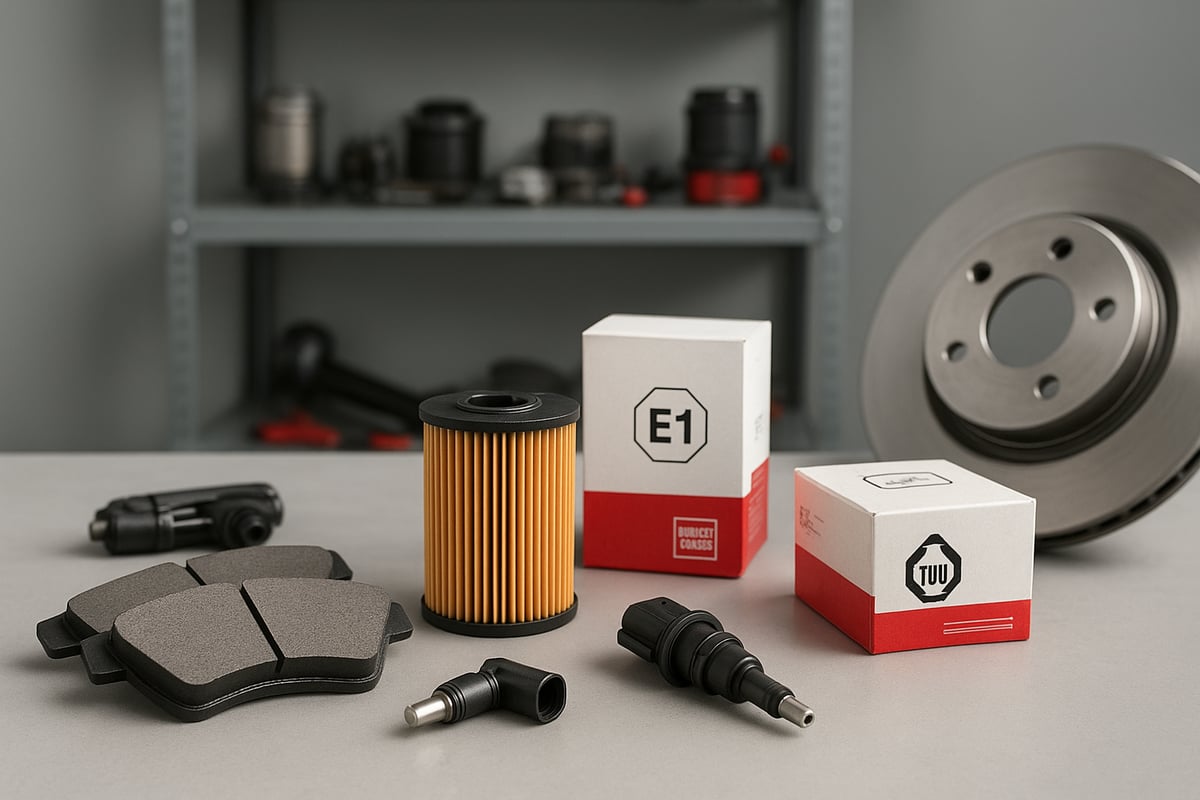
Certificates, standards and manufacturer approvals
Certificates and test marks are the most important guide for high-quality car spare parts. Among the most well-known are the ECE test mark, such as ECE R90 for brake pads, which guarantees minimum safety and performance requirements. TÜV and ISO certifications also represent tested standards. Manufacturer approvals are also relevant, as they confirm that the part is approved for a specific vehicle model and therefore does not jeopardize warranty claims. An overview of the most important Quality features and test marks can be found at autoseifert.com. Those who pay attention to such verifications protect themselves from making bad purchases and receive the manufacturer's warranty for car spare parts.
Detecting counterfeits and plagiarism
The market for car spare parts is increasingly flooded with counterfeits and plagiarism. Pay particular attention to warning signs such as unusually low prices, missing or poorly printed packaging, and faulty logos. Counterfeits pose significant safety risks and often lead to the loss of warranty claims. According to the ADAC (German Automobile Club), the number of counterfeits in online retail increased again in 2024. Therefore, carefully inspect each part before installation and only purchase from certified dealers. This ensures that your car spare parts meet legal requirements.
Material and workmanship quality
The quality of materials and workmanship is a key criterion for car spare parts. Differences can be seen, for example, in rubber and synthetic seals or the surface finish of metal parts. High-quality spare parts impress with their precise fit, smooth surfaces, and solid workmanship. A visual inspection before installation is advisable: Check that the material appears robust and that no manufacturing defects are visible. Inferior parts can lead to premature wear or even safety issues. Therefore, invest in tested car spare parts.
Compatibility and fit
Not every part fits every vehicle: Compatibility is essential when purchasing car parts. The VIN (vehicle identification number) and information from the vehicle registration document help identify the correct replacement part. Many online shops offer tools that allow you to check compatibility. Errors often arise from universal parts that don't fit perfectly or are difficult to install. Check all relevant information before purchasing to avoid future problems with car parts.
Guarantee, return and warranty
When purchasing spare parts for your car, you are entitled to the minimum statutory warranty. Many retailers also offer their own warranties. Be sure to check the return policy beforehand, especially when purchasing online. Keep all receipts and invoices in case of a possible claim. Also document the installation if the warranty claim depends on professional installation. Clear warranty and guarantee regulations give you additional security when purchasing spare parts for your car.
Step-by-step: How to find and order the right spare part
Buying spare parts for your car can seem complex at first glance. However, with clear step-by-step instructions, you'll stay on top of things and avoid common mistakes. This guide will show you how to select, compare, order, and install the right part for your vehicle with confidence.
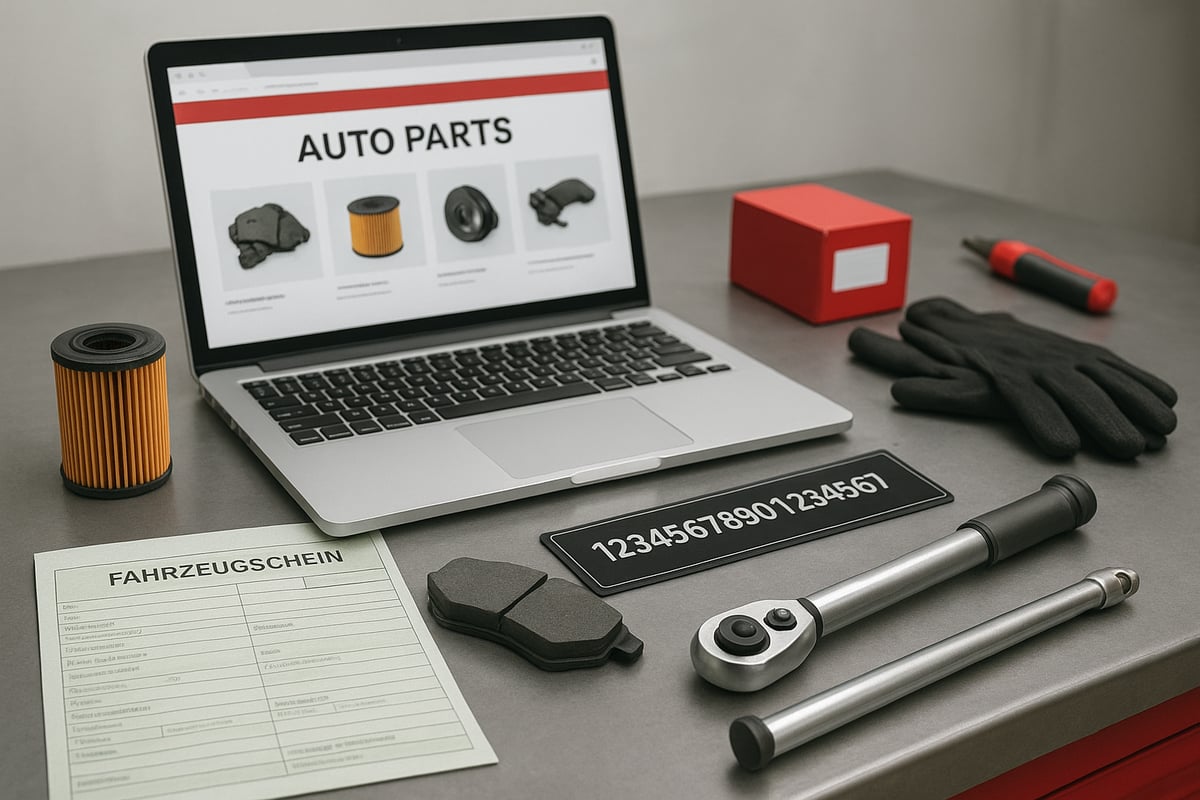
Step 1: Exact parts search with vehicle registration document and VIN
To find the right spare parts for your car, accurate identification of your vehicle is crucial. The vehicle registration document (registration certificate part I) contains important information such as the manufacturer's key number and type key number. Even more precise is the vehicle identification number (VIN), which you can find in the vehicle registration document or directly on the vehicle (e.g., in the engine compartment).
Using the VIN, you can search online for suitable parts. Many manufacturers offer portals where you can find the exact spare parts for your car using the VIN. Independent online databases and parts catalogs also help you avoid ordering the wrong parts. Make a note of all relevant information before you begin your search.
Step 2: Compare offers and dealers
Comparing prices for car spare parts is always worthwhile. Use various online shops, specialist retailers, and workshops to compare offers. Pay attention not only to the price, but also to shipping costs, delivery times, and customer reviews.
Customer reviews provide information about the reliability of the supplier and the quality of the delivered parts. Check whether the dealer is certified and offers a return policy. You can find many more tips and a detailed overview in the Guides and tips for buying parts, which provides valuable information for safe shopping.
Create a comparison table to clearly compare all offers. This will help you keep track and make an informed purchasing decision.
Step 3: Check quality characteristics
Before ordering, you should carefully check the quality characteristics of the spare parts for your car. The following checklist will help you:
- Are certificates (e.g. ECE, TÜV) available?
- Is there any indication of the original packaging and manufacturer's brand?
- Are test marks, serial numbers or manufacturer approvals visible?
- Do the technical specifications match your vehicle?
If in doubt, it's best to contact the dealer directly. Reputable suppliers will be happy to provide information and, upon request, product data sheets or other documentation. This ensures that you receive high-quality car spare parts.
Step 4: Order and payment
After selecting the right spare parts for your car, place your order. Make sure you enter all information, such as your delivery address and vehicle details, correctly. Use secure payment methods such as PayPal, credit card, or Klarna to enjoy buyer protection.
Note the shipping method and the estimated delivery time. Save the order confirmation and invoice – these documents are important for any returns or complaints. A transparent ordering process ensures security and traceability.
Step 5: Delivery and inspection of the spare part
Upon receipt, you should immediately check the spare car parts for completeness and any possible transport damage. Compare the new part with the old one to check for a proper fit and the correct connections.
If the delivered part doesn't fit or is damaged, contact the dealer immediately and make use of the return policy. A careful inspection prevents future problems during installation and increases operational safety.
Step 6: Installation – DIY or workshop?
Depending on the complexity, installing spare car parts can be done by yourself or requires specialist knowledge. Make sure you have the right tools, technical expertise, and a suitable work environment.
For safety-critical parts like brakes or chassis, a visit to a workshop is often recommended. For simple jobs like changing filters or bulbs, many instructions are available online. When in doubt, always choose safety first.
Installation tips & sources of error: How to replace
Anyone who deals with spare parts for cars knows that proper installation is crucial for safety and functionality. Even small errors can lead to major problems. With the following tips and advice, the replacement will be a reliable and trouble-free process.
Preparation and tools
Before you begin replacing car parts, you should optimally prepare your work area. A clean, well-lit area and the appropriate tools are essential.
Checklist for exchange:
- Torque wrench for precise tightening
- Ratchet, socket set, screwdriver
- Lifting platform or jack with jack stands
- Gloves and safety goggles
- Brake cleaner and rags
Don't forget to compare the replacement part with the old one beforehand. Check the dimensions and connections. This will help you avoid making a mistake and save time.
Step-by-step instructions using the example of changing brake pads
Replacing brake pads is a typical case where car spare parts must be installed correctly. Proceed systematically:
- Secure the vehicle, apply the handbrake, block the wheels with chocks.
- Loosen wheel nuts, lift vehicle, remove wheel.
- Loosen the brake caliper and remove the old brake pads.
- Clean contact surfaces, reset piston.
- Insert new brake pads, reassemble everything.
- Observe torques according to manufacturer’s specifications.
- Carry out visual inspection and functional test.
Typical errors when changing brake pads:
- Incorrect mounting position (left/right swapped)
- Lack of lubrication at contact points
- Overlooking wear on brake discs
- Inadequate cleaning of the contact surfaces
If you're unsure, consult specialist literature or a professional. This will ensure safe installation and that your car parts function as intended.
Avoid common mistakes when replacing parts
Especially when replacing spare parts for cars, avoidable mistakes often creep in. The most common pitfalls:
- Confusion of left and right parts, especially with mirrors, headlights or wishbones.
- Ignoring the tightening torques specified by the manufacturer.
- Lack of ventilation in hydraulic components such as brakes or clutches.
- Reuse old seals instead of installing new ones.
Always be sure to read the included installation instructions. Check each car spare part carefully before installation. This will avoid unnecessary rework and subsequent damage.
After installation: inspection and test drive
After replacing car parts, a final inspection is essential. Check all fasteners, seals, and connectors for tightness and leaks.
Take a test drive. Pay attention to noises, braking behavior, and any warning lights. Only when everything is working properly will your vehicle be safe to drive again.
Future trends 2025: Digitalization, sustainability and new technologies for spare parts
Automotive spare parts are facing profound change in 2025. Digitalization, sustainability, and innovative manufacturing technologies will dominate the market. What can drivers and workshops expect? A look at the most important developments provides guidance and shows how the spare parts market will change in the coming years.
Digitization of the spare parts market
Digitalization is increasingly shaping spare parts for cars. Online platforms now enable targeted searches and ordering of parts, often supported by parts-finding apps or augmented reality installation instructions. Digital maintenance logs are replacing traditional service booklets and simplifying the documentation of repairs.
Intelligent ordering systems analyze the vehicle status and automatically suggest suitable spare parts for the car. Future of the automotive market Such digital solutions are gaining increasing importance and improving transparency and efficiency. Workshops benefit from faster processes, while customers can avoid potential sources of error when purchasing parts.
Sustainability and recycling
Sustainability is becoming increasingly important for automotive spare parts. The trend is toward recycled and remanufactured spare parts, which conserve resources and reduce costs. Legal requirements for the circular economy promote this development and require manufacturers to use recyclable components.
In addition to the environmental benefits, recycled car parts also offer financial savings. However, buyers should pay attention to tested quality to ensure safety and durability. Demand for green solutions is growing, which is also affecting the product range in online retail.
New materials and manufacturing technologies
Innovative materials and manufacturing methods are revolutionizing automotive spare parts. 3D printing enables the rapid production of rare or unique components. This technology is a real advantage, especially for classic cars or special electric car parts.
Lightweight components made of high-tech plastics or aluminum help reduce vehicle weight and increase efficiency. Major manufacturers like BMW and Volkswagen are already leveraging these advances to make their spare parts even more sustainable and efficient.
| technology | Advantages | Example |
|---|---|---|
| 3D printing | Fast availability | Vintage car parts |
| lightweight construction | Energy savings | E-car components |
Connected and intelligent spare parts
Connected automotive spare parts, such as smart sensors and control units, are fundamentally changing maintenance and diagnostics. Tire pressure sensors, connected batteries, and digital control units deliver real-time data to the workshop and driver.
According to industry forecasts, the share of connected spare parts for cars will rise to around 30 percent by 2025. These components enable predictive maintenance and help detect failures early. For drivers, this means greater safety and lower repair costs, as problems can be resolved more quickly.
